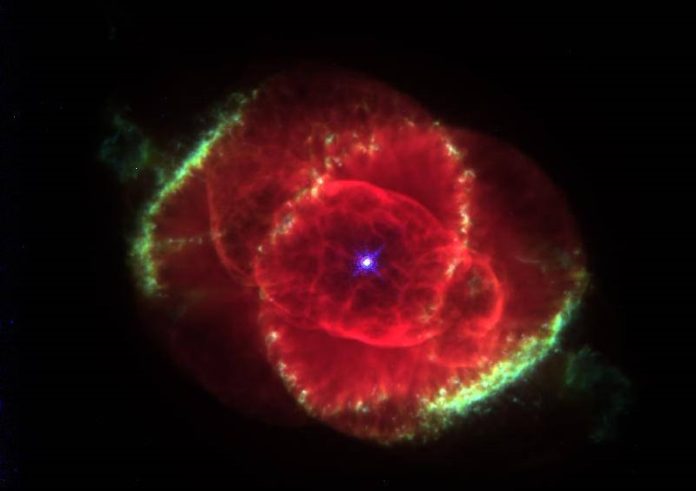
You might be familiar with the bizarre ritual of the female praying mantis which,
I’m told, bites off the head and eats other body parts of the poor male they just mated with.
It seems consuming partners is not unheard of.
It’s even seen in the lives of stars where binary stars orbit one another closely and one star ultimately consumes the other.
If the victim is a neutron star a burst of neutrinos can be generated and a new study reveals they might just be detectable on Earth.
It’s estimated that at least 50% of all the stars in the sky are binary star or multiple star systems, stars that are gravitationally bound and orbit around a common centre of gravity.
Within a binary star system, the individual components can be young and hot or old and cool and the nature of the stars will determine their interactions.
Mizar and Alcor in Ursa Major are a very well known binary paring.
To those with good eyesight the two component stars can be seen but for those a little more optically challenged, binoculars are needed to separate the two. In reality the whole system comprises of six stars engaged in a complex gravitational dance.
In some binary systems the separation between the stars can be close enough that if one evolves into a red giant, swelling up in size, it may engulf its companion in a process known as common-envelope evolution.
It’s a process that happens more often than you think but of particular interest are those where the star being engulfed is a neutron star. This latter example occurring with an estimated rate of anything between 0.01-1 events per hundred years in the Milky Way.
Common-envelope evolution involving neutron stars is thought to explain the existence of X-ray binaries and some gravitational wave sources but, the difficulty in understanding the processes lies in the challenges identifying stars that have swallowed up a neutron star.
In their recent paper “Detectable MeV Neutrino Signals from Neutron-Star Common-Envelope Systems” Ivan Esteban, John Beacom and Joachim Kopp explore whether we will be able to detect them from Earth.
In such a system, a neutron star that has been swallowed up by a companion star is thought to accrete material at an astonishing rate due to its strong gravitational field.
Eventually one of two things are thought to happen; either the neutron star merges with the core of the host star or the envelope of the host star will blow off from radiation pressure.
The overall process is not too well understood but one train of thought suggests the accretion can accelerate to such levels that radiation is trapped inside the host star and neutrino emissions become prominent.
The team postulate that direct observations – none have been detected to date – would resolve a number of outstanding questions such as accretion rates and event timescales.
If lucky enough to identify an event in our galactic neck of the woods then it may even be possible to narrow down the location of the object to within 5 degrees allowing follow up observations of electromagnetic outbursts should the envelope be ejected.
Esteban and colleagues conclude the neutrino bursts from such events are within the grasp of existing technology but that the lack of a targeted search program are among the reasons that none have been found to date.
Alas getting an early warning of an event requires some development in either electromagnetic or gravitational wave detection before that dream can be realised.
Follow us on Twitter for more articles about this topic.
Written by Mark Thompson/Universe Today.



